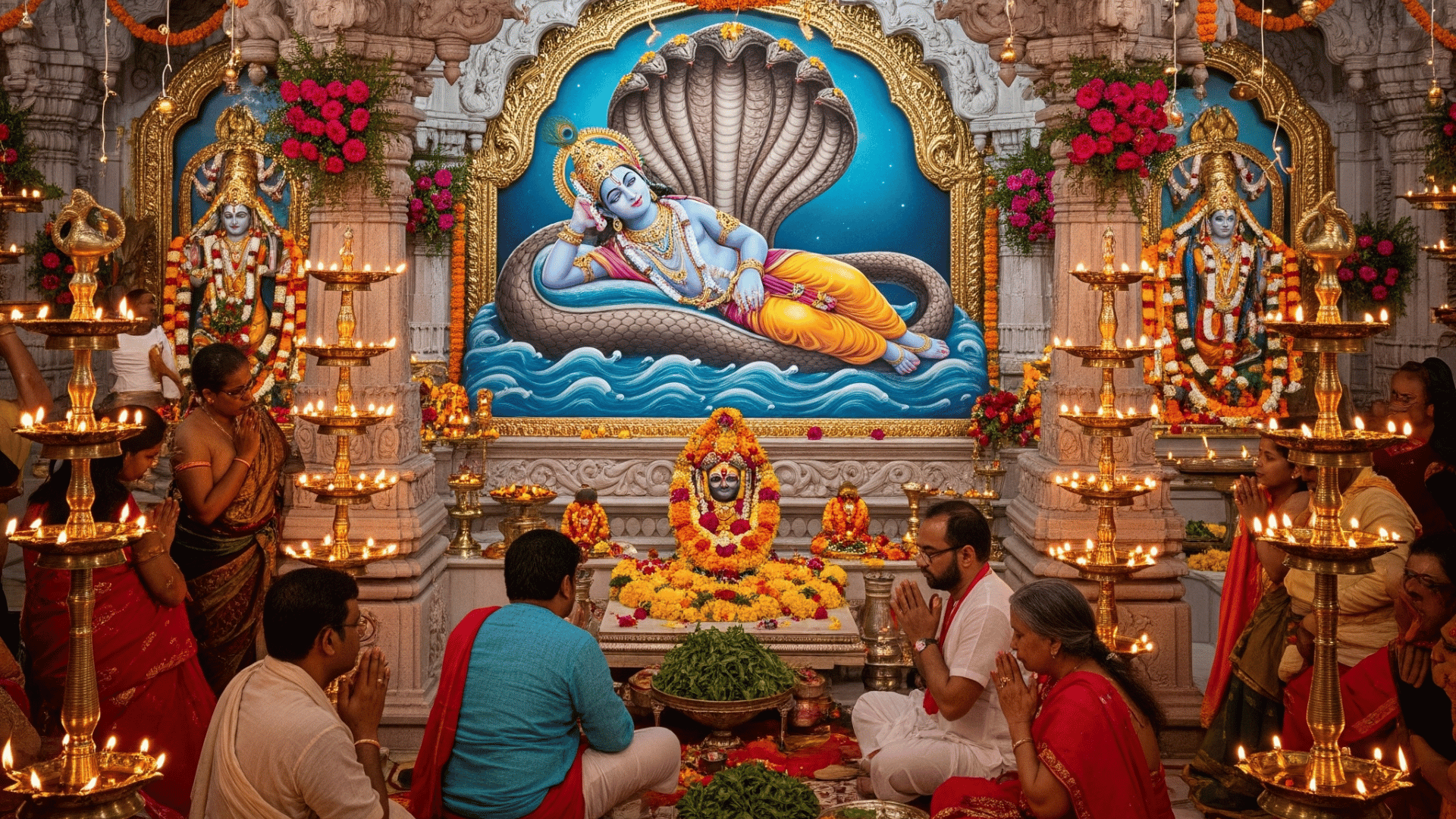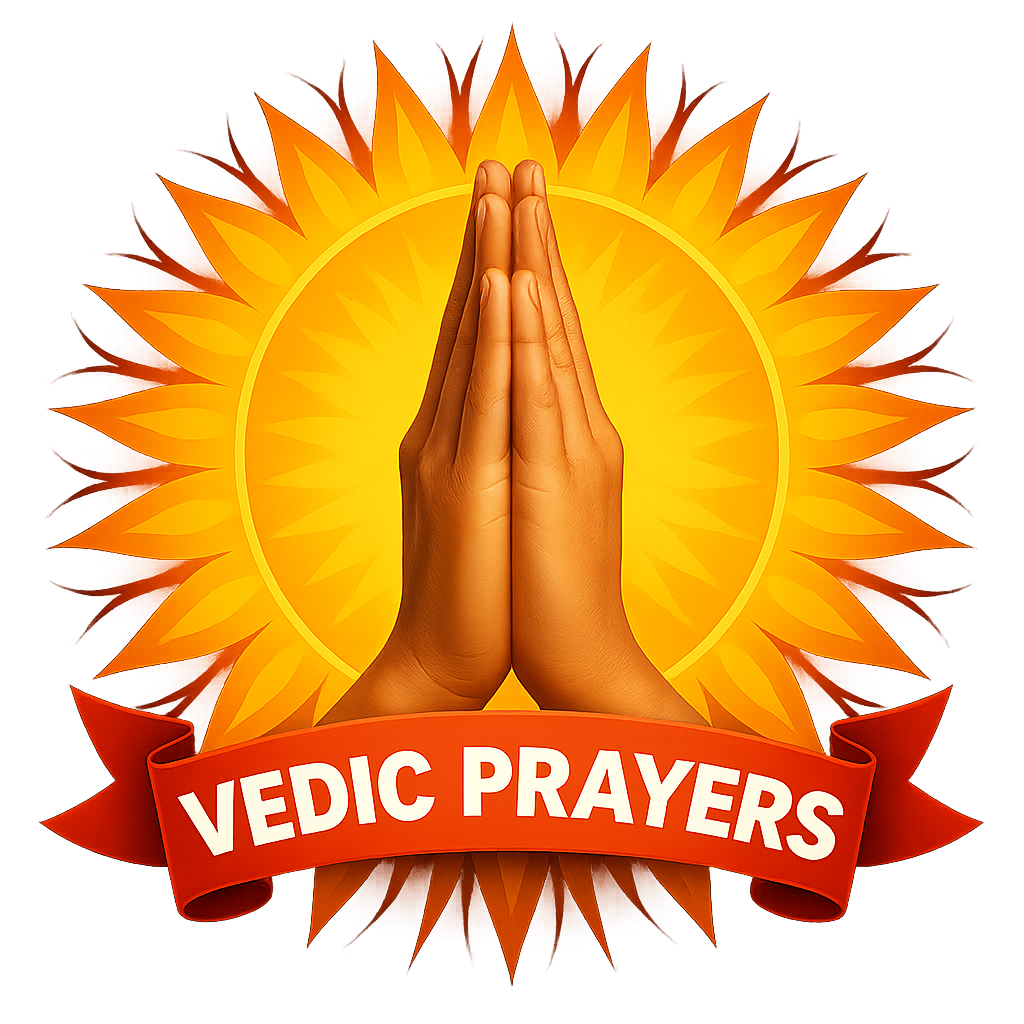
In Sanatan Dharma, the Ekadashi tithi holds a special significance. Each month, two Ekadashis occur – one in the Shukla Paksha (waxing phase of the moon) and one in the Krishna Paksha (waning phase). Both these Ekadashis are considered spiritually, religiously, and even scientifically important. The Ekadashi that falls during the Shukla Paksha of the Bhadrapada month is known as Parivartini Ekadashi, also referred to as Padmini Ekadashi or Jal Jhulni Ekadashi. This vrat (fast) is believed to be highly auspicious and fruitful for devotees of Lord Vishnu.
According to the scriptures, observing Ekadashi vrat destroys sins and brings happiness, peace, and prosperity in life. Parivartini Ekadashi is especially significant because it is the day when Lord Vishnu, while resting in yogic sleep (Yoga Nidra), changes His position. That is why it is called Parivartini Ekadashi.
What is Parivartini Ekadashi?
Parivartini Ekadashi is observed on the Ekadashi tithi of Bhadrapada Shukla Paksha. It is believed that on this day, Lord Vishnu, who rests on the Sheshnag (divine serpent) in the cosmic ocean (Kshirsagar) during the four months of Chaturmas, turns to His side.
The period of Chaturmas begins from Devshayani Ekadashi (in Ashadha Shukla Paksha) and continues until Dev Uthani Ekadashi (in Kartik Shukla Paksha). During these four months, Lord Vishnu is believed to be in Yoga Nidra, and all auspicious ceremonies such as weddings and major functions are considered prohibited.
On Parivartini Ekadashi, when the Lord changes His position, it symbolizes a transformation in the cosmic cycle, spreading new energy and positivity across the universe. Therefore, this day is considered highly significant for fasting and worship.
When is Parivartini Ekadashi in September 2025?
According to the Hindu Panchang, in 2025, Parivartini Ekadashi will be observed on Wednesday, 3rd September 2025.
- Ekadashi tithi begins: 3rd September 2025, Wednesday, at 3:53 AM
- Ekadashi tithi ends: 4th September 2025, Thursday, at 4:21 AM
- Parana (breaking the fast): Morning of 4th September 2025
Thus, devotees will observe the fast on 3rd September 2025 and break it the following morning.
Why is Parivartini Ekadashi Observed?
There are multiple reasons why this Ekadashi vrat is observed:
- Devotion to Lord Vishnu – The day is dedicated to Lord Vishnu, and devotees express their love and faith through this vrat.
- Destruction of Sins – Scriptures mention that observing this fast eradicates sins of several lifetimes.
- Freedom from Worldly Sorrows – The vrat helps remove life’s miseries, illnesses, grief, and obstacles.
- Attainment of Moksha – One who observes it sincerely is believed to attain Vaikuntha (the abode of Vishnu).
- Special Merit of Chaturmas – Any worship or vrat performed during Chaturmas yields results manifold compared to normal times.
The Legend of Parivartini Ekadashi
According to a Puranic story, once King Harishchandra, who was known for his truth and righteousness, faced immense difficulties in his life. Despite following dharma, he suffered greatly and lost his kingdom and family.
Seeking relief, he approached Sage Gautam, who advised him to observe the Parivartini Ekadashi fast with devotion. The king followed the instructions with utmost faith. As a result, all his sins were destroyed, he regained his lost kingdom and family, and eventually enjoyed a blissful life.
This legend shows that Parivartini Ekadashi has the power to remove sorrows and bestow peace, prosperity, and happiness upon its observers.
Vrat and Puja Vidhi (Rituals)
The vrat of Parivartini Ekadashi should be performed with sincerity and discipline. The rituals are as follows:
- Take a holy bath early in the morning and take a vow (sankalp) to observe the fast.
- Begin the vrat with prayers to Lord Vishnu.
- Clean the worship area and place an idol or picture of Lord Vishnu.
- Offer yellow flowers, Tulsi leaves, incense, lamp, and food (naivedya).
- Offering Tulsi leaves to Lord Vishnu is mandatory.
- Observe a complete fast, or consume only fruits (phalahar).
- At night, stay awake (jagran) and chant bhajans and hymns.
- On the next day (Dwadashi), donate to Brahmins and the needy before breaking the fast.
Benefits of Observing Parivartini Ekadashi
- Brings happiness, peace, and prosperity in life.
- Destroys sins of past lives.
- Helps overcome financial difficulties.
- Promotes harmony and love in the family.
- Provides relief from health problems.
- Grants moksha and entry into Vaikuntha Dham.
Special Belief – Jal Jhulni Ekadashi
In many regions, Parivartini Ekadashi is also celebrated as Jal Jhulni Ekadashi. On this day, processions and jhankis (tableaux) of Lord Vishnu or Lord Krishna are carried out. The idols are placed in palanquins or swings (jhulas) and taken through the streets in a water-procession.
Devotees participate with great enthusiasm, singing bhajans and performing kirtans. This tradition is especially prominent in Madhya Pradesh, Rajasthan, and several parts of North India.
Scientific Perspective
The vrat of Ekadashi also holds scientific significance:
- Fasting gives rest to the digestive system.
- The body releases toxins and impurities.
- It promotes mental calmness and positivity.
- Enhances self-control and willpower.
Conclusion
The importance of Parivartini Ekadashi lies not only in its religious and spiritual aspects but also in its health and scientific benefits. Observing this vrat not only frees a person from sins and miseries but also brings them closer to attaining moksha and the blessings of Lord Vishnu.
















